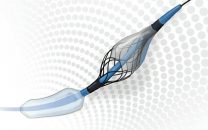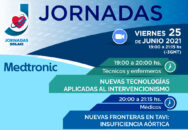Early intervention in asymptomatic valvular heart disease, age recommendations to decide between TAVR and surgery for aortic stenosis, and a push in favor of transcatheter repair in secondary mitral regurgitation are some of the new modifications to the European Society of Cardiology (ESC) Guidelines for the Management of Valvular Heart Disease. This new document was…
New Markers of Aortic Stenosis Define Asymptomatic Patients
Asymptomatic aortic stenosis has been keeping us in tense stillness. However, there are new markers capable of identifying patients that might benefit from earlier intervention. In this regard, cardiovascular magnetic resonance (CMR) has been gaining its well-deserved place in cardiology and now more specifically in aortic stenosis. This study sought to validate CMR markers of…
TAVR Durability Becomes Irrelevant after TRANSIT Outcomes
The international registry TRANSIT has shown treating degenerated transcatheter aortic valves (TAVs) with a second TAVR is safe and effective. These finding are of crucial importance to the definite adoption of TAVR in the lower risk, younger population. Transcatheter aortic valve replacement (TAVR) has determined a paradigm shift in severe aortic stenosis treatment. Technological innovation…
Direct TAVR vs. Predilation: Potential Cost of a Simpler Procedure
Does simplifying TAVR involve a cost? At least for low-risk patients included in the PARTNER 3, the question appears somewhat abstract. Predilation and direct TAVR resulted equally safe, though the latter shortened procedural time and did not require further post dilation. Both strategies resulted virtually identical in terms of clinical events. The use of predilation…
European Consensus on Antithrombotic Management in TAVR
All the controlled randomized evidence recently published called for an updated document on antithrombotic management in transcatheter aortic valve replacement (TAVR). While thrombotic and hemorrhagic complications have diminished over time—as both the technique and the devices have been perfected—, they still remain as common adverse events in TAVR. Recommendations in the 2017 European Guidelines were…
Self-Expanding Valve in Extreme Surgical Risk After 5 Years
Patients with aortic stenosis and extreme surgical risk have extremely high mortality due to known comorbidities. The short-term benefit of transcatheter aortic valve replacement (TAVR) with self-expanding valve is clear, and it warrants the procedure in this challenging population. While elderly patients with comorbidities who are at extreme surgical risk might be eligible for TAVR,…
Silent Embolism during TAVR: Just Images or Potential Cognitive Deterioration?
Finding new cerebral ischemic imaging after transcatheter aortic valve replacement (TAVR) is almost the rule, especially for self-expandable valves. These images might disappear over the months but, unfortunately, they are associated to small but significative cognitive deterioration. Most patients undergoing TAVR develop silent cerebral ischemic lesions (SCILs) that show in magnetic resonance imaging (MRI). The…
Post TAVR Acute Coronary Syndrome: Frequency and Potential Damage
After Transcatheter Aortic Valve Replacement (TAVR) acute coronary syndromes (ACS) are rare and mostly present as non-ST elevation events. In this context, the few ST elevation events have bad prognosis, with close to 30% mortality at 30 days. This study included patients undergoing TAVR between 2012 and 2017 admitted for acute coronary syndrome during followup. …
AAS vs DAPT post TAVI: Meta-Analysis of Randomized Studies
Aspirin monotherapy (ASA) reduced the combined risk of thrombotic and bleeding events compared against dual antiplatelet therapy (DAPT) in patients receiving transcatheter aortic valve replacement (TAVR). This meta-analysis has only reproduced smaller randomize study outcomes and does not include the OCEAN-TAVI registry, the only one that has shown something different so far. Even though ASA…










